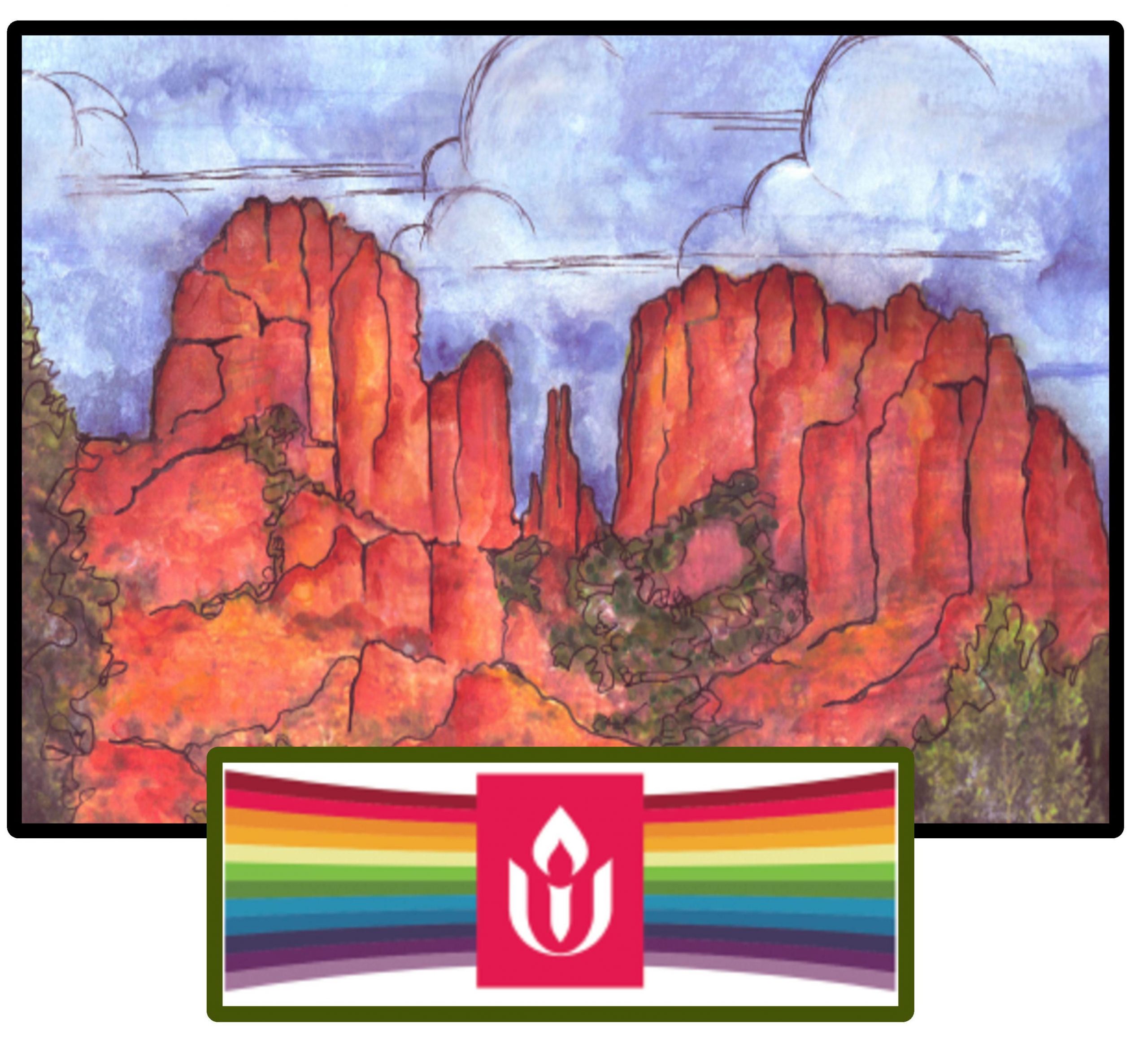SUUF Spiritual Reflection
Sunday Morning May 3, 2020 from Rev. Glenn
Link to Virtual Service for today:
“If the trees can keep dancing, So can I.” by Rev. Glenn
This past week, a friend forwarded to me a recently published National Public Radio (NPR) article.
The article was the result of a poetry challenge NPR issued in Early April 2020.
The challenge was to submit some poetry which describes how you have been affected by the global coronavirus pandemic…and the first line of your poem should begin with the line,
“What I’m learning about grief…”
So after all the submissions were received, NPR’s poet-in-residence, Kwame Alexander, compiled lines from the myriad poems to create one crowdsourced, community poem.
The communal poem combined submissions from 33 different poets, from all across the country, one from overseas, women, men and one 13 year old young person.
I found the poem very moving myself, I didn’t know you could take such creative license like that, cut and paste other peoples poems.
I encourage you to read it for yourself.
I will NOT recite the poem in its entirely, it is quite long.
I do want to read a few stanzas and riff off of them briefly, to hopefully unlock some of the wisdom within.
What I’m learning about grief
Is that it is a language.
Suffering is its own speech
it will not go away just because you won’t look it in the eye
[What I’m learning about grief ]
is that it’s an old lover that won’t leave. trying to hold your hand again –
that it aches in the arches of feet
that its mother is loss, its father, change
Make room for it.
When I use the term “grief” I use it with 2 separate meanings.
I use grief to describe a feeling, “I am feeling grief,” a kind of profound, full bodied sadness.
Then there is also grief, perhaps Grief with a capital G, which is the Grief Process; as in, the emotional/behavioral/physiological/social process of regaining equilibrium after loss or change.
The Grief process is what these two stanzas are referring to.
Now, for many of us, when we feel grief welling up inside us, our kneejerk response is to:
avoid avoid avoid,
shut it down, power through,
numb it away.
Why do we do this?
We are afraid;
Afraid of the perhaps overwhelming feelings of sadness.
Afraid to acknowledge the reality of the loss.
We harbor false beliefs:
We are tough, we can power through
Grieving is a weakness
Or I already grieved that last month so I don’t have to grieve anymore.
Mostly, we do this, because we never learned how to grieve.
If our role models growing up would avoid avoid and power through/shut down or numb out to grief in their life…chances are pretty good that is what we will do as well.
Welcoming Grief is a skill. A skill we can learn.
It requires a softness in our heart.
It requires us to “make room for it”
We must learn the language and contours of grief
We must “Look it in the eye” when it comes to visit
Great benefits come to us when we welcome grief, learn that skill.
We can roll with the punches of life
The slings and arrows of outrageous fortune
We can acknowledge loss and failure and continue the dance
Great detriment comes to us if we continually avoid or power through or numb out grief. It just adds up and up and up. Then when we let one grief in, all the ungrieved losses from years past come bursting in. It is true, I have seen this happen. It can be quite overwhelming.
Learning to respond to Grief with skill requires humility. Why?
Because Grief has its own timeline, a timeline that doesn’t conform to our wished-for appropriate amount of grieving timeline.
Grief comes and goes, it isn’t linear, it can’t be neatly compartmentalized.
It can spring up years after a loss. This has happened to many of us recently; old hurts and pains have sprung up during this past six weeks of stay-in-place orders during the global pandemic.
The philosopher FRIEDRICH NIETZSCHE has a saying attributed to him;
“When we are tired, we are attacked by ideas we conquered long ago.”
In the recovery community, a well known self-care tool is known as H.A.L.T. This is an Acronym that stands for Hungry, Angry, Lonely, or Tired. When we are in one of these states, there is a danger for relapse to unhealthy/addictive behaviors. And so doing the work is to be present and aware of your current states, and healthy behaviors to engage to response to them. Such as when hungry, eat. When tired, rest.
The final two stanzas of the poem end on a high note:
What I’m learning about grief
Is to acknowledge its presence
Its many forms and guises
Then, to use it, while reaching out
Connected To everyone who is braving this same storm
What I’m learning about grief is that it is still learning about me
Learning that I am strong and resilient
If the trees can keep dancing,
So can I.
This current predicament we are in, we can use our suffering to experience solidarity with each other..
“connected to everyone who is braving the same storm”
And the communal poem ends with a hopeful tone
Using the natural world as our role model
for strength and resilience…
How a tree in the wind bends, but doesn’t break.
“If the trees can keep dancing,
So can I.”
Any poem with tree and dancing metaphors, I will probably enjoy.
And so may you…Keep on Dancing!
Go in Peace.
Topics: Glenn Farley Virtual Services
